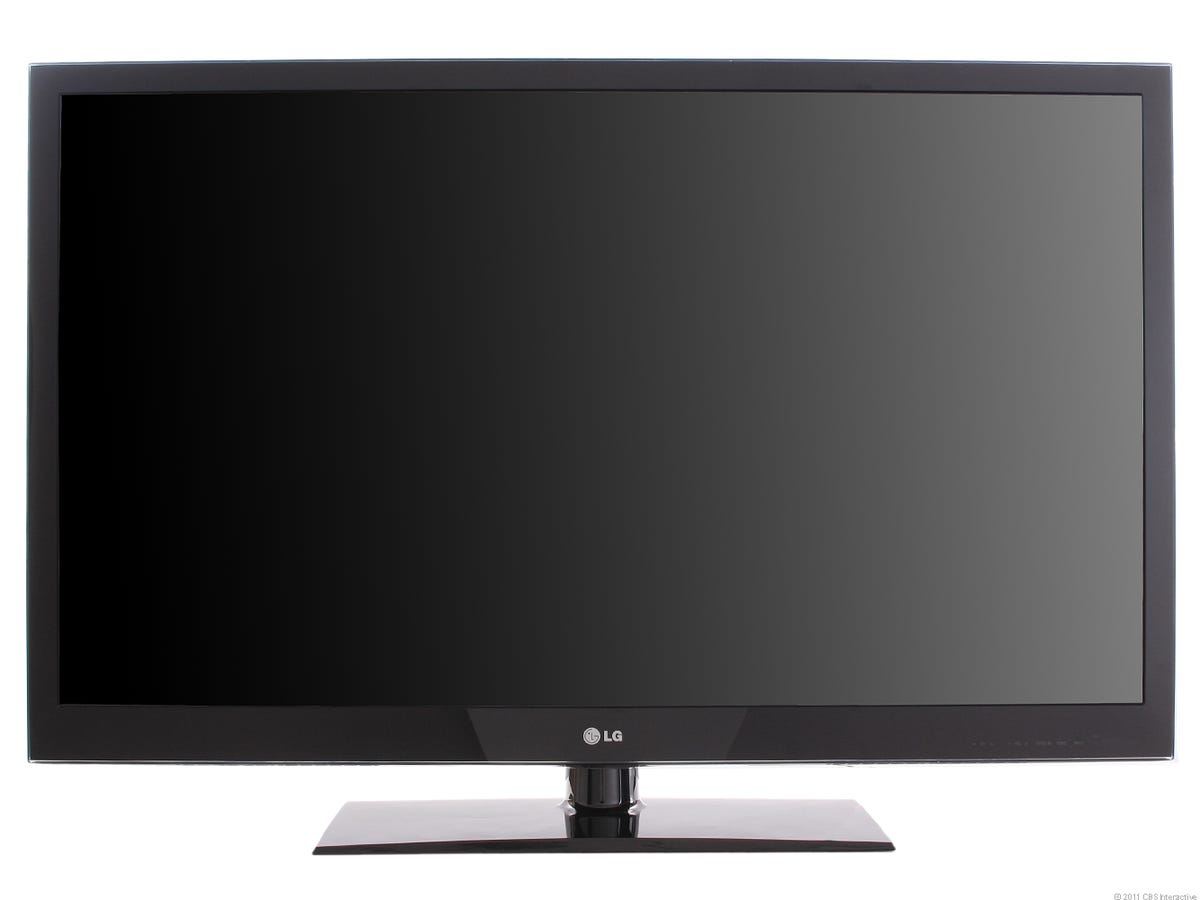LG LW5600 series (photos)
While passive 3D has its flaws, the LG LW5600's 2D picture quality is very good for an edge-lit LED-based LCD TV, especially in bright rooms.

Overview
That said, we can forget about 3D and focus on what really matters: 2D picture quality, where the LW5600 is one of the best edge-lit LED TVs we've tested. The dimming backlight, despite its flaws, is an asset overall (and no, it's not available on less-expensive, 2D-only 2011 LGs) along with best-in-class color. Perhaps most importantly, the LW5600 has a matte screen that performs better than glossy screens in bright rooms. We liked LG's Internet features and even its funky remote this year, although buyers seeking a style statement will be disappointed. The LG LW5600 costs more than most LED-based LCD TVs, but it offers the complete package and deserves consideration from buyers in this price range regardless of how they feel about 3D.
Corner detail
Stand detail
Side view
Passive 3D glasses
The biggest market advantage of passive 3D is inexpensive glasses. LG packs four pair of passive specs in with the LW5600, and additional pairs cost $20. Less expensive compatible circular polarized glasses are available from online merchants, and if you swipe a pair of passive 3D glasses from your local theater, they should work too.
Back panel inputs
Standard remote
Magic motion remote
We called the wand-like motion controller a gimmick last year, but now that it can be used seamlessly across all menus and nearly every app (Netflix is the only exception we found--it prevents motion control, although the wand's cursor buttons still work), many of which seem designed with motion control in mind, it's much more appealing. Sure some things could be better--we wish the wand had a dedicated Return/Back button, response times occasionally lagged a bit and on occasion we had to give the wand a vigorous shake to get our cursor to return--but it was sometimes easier and faster than using the standard remote (especially after we changed pointer settings to Speed: Fast and Alignment: On in the Settings>Options menu).
Since the wand is radio-controlled it doesn't require line-of-sight to the TV. Another bonus is drag/drop, which we used to customize menus where available, drag a map in the Google maps app, and easily scroll down an AP news story by dragging a scroll bar, for example. Waving the wand at the screen to navigate menus and apps will take some getting used to for motion control novices, but it's a cool and somewhat useful option to have. The biggest downside is that it means having an extra remote on your coffee table (at least until Harmony incorporates motion control).
Wi-fi dongle included
Home page
Premium content
That said, we appreciated that LG's Premium services are almost all excellent. Separating the wheat from chaff is often difficult, and we prefer to have a few apps/services that work well and offer satisfying content as opposed to myriad useless ones.

